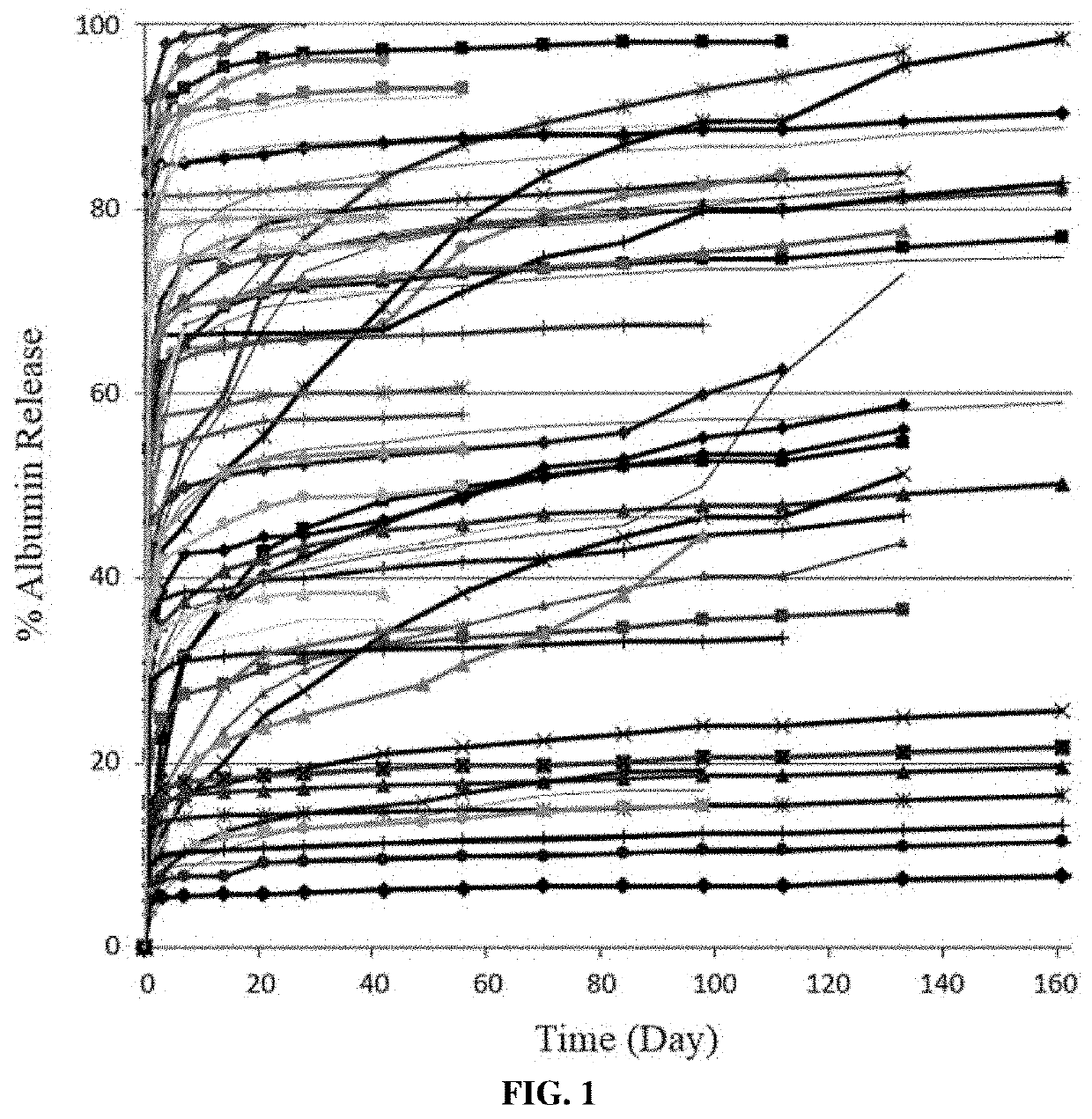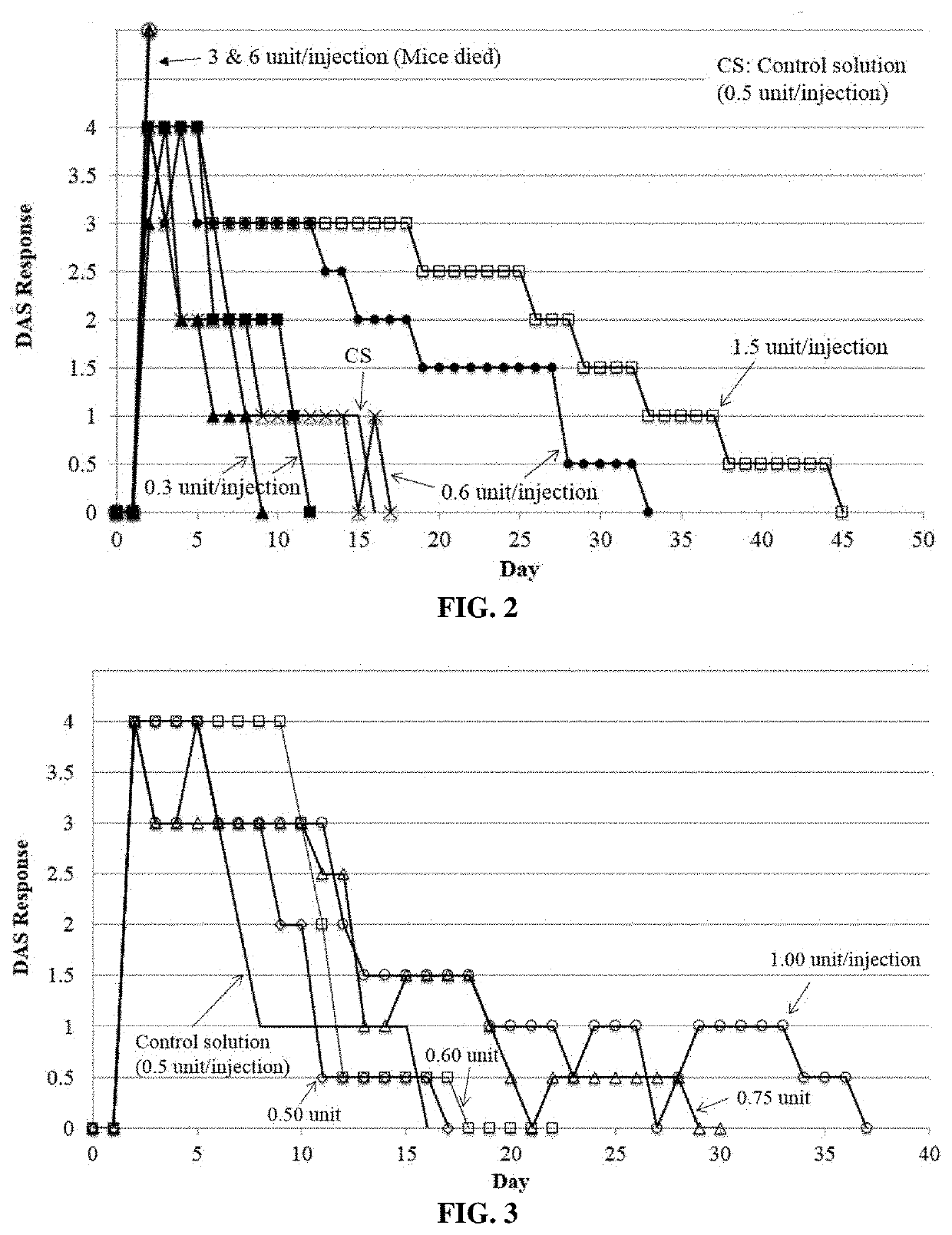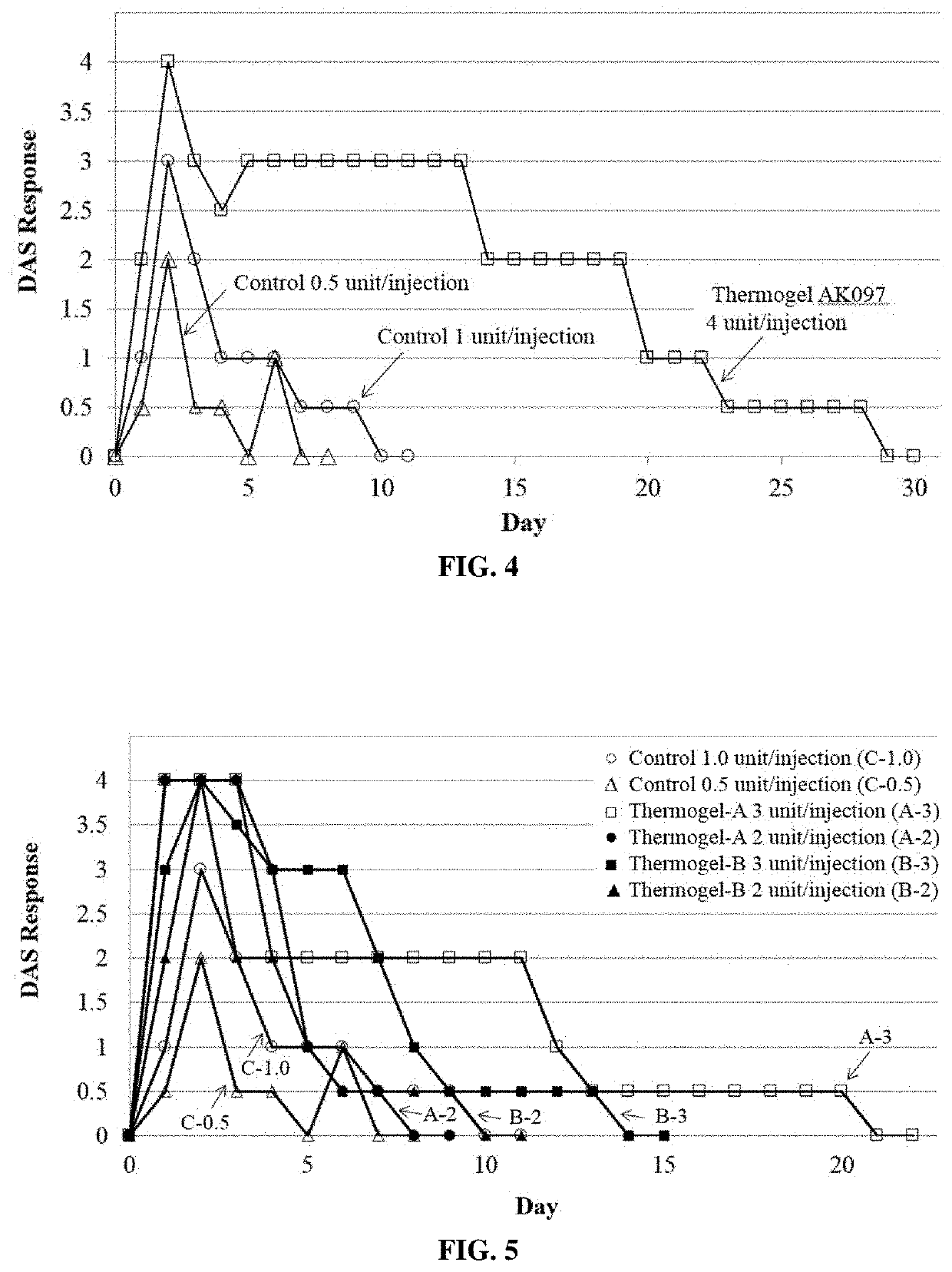Biodegradable polymer formulations for extended efficacy of botulinum toxin
a biodegradable polymer and botulinum toxin technology, applied in the field of drug delivery systems, can solve the problems of formulation challenges, unsuitable for microparticle fabrication using existing methods, and the discontinuation of the production of nutropin depot®, so as to enhance the biological activity of entrapped proteins, enhance the appearance of wrinkles, and reduce or prevent one or more symptoms.
- Summary
- Abstract
- Description
- Claims
- Application Information
AI Technical Summary
Benefits of technology
Problems solved by technology
Method used
Image
Examples
example 1
on of Drug-Eluting Biodegradable Polymer Microparticles Having Various Properties
Materials and Methods
[0216]Formulation of Botulinum Toxin / Albumin Microparticles
[0217]Type A complex from Clostridium botulinum available from List Biological Laboratories, Inc. (Campbell, Calif.).
[0218]Botulinum toxin (100 μg) was diluted with 1 mL of Tris buffer. The solution was made into 100 μL aliquots and frozen. Each 100 μL aliquot (containing 10 μg toxin, or approximately 10,000 Mouse Units) was diluted in 20 mL albumin solution (50 mg / mL in 50 mM Tris-HCl pH 7.5).
[0219]The series of steps commonly involved in incorporating proteins into biodegradable polymer microparticles often denatures the proteins, resulting in a loss or reduction in their bioactivity P. A. Schellman, Solvent denaturation, Biopolymers, 17 (1978) 1305-1322; M. van de Weert, W. E. Hennink, W. Jiskoot, Protein instability in poly(lactic-co-glycolic acid) microparticles, Pharm. Res., 17 (2000) 1159-1167].
[0220]The botulinum tox...
example 2
icroparticles Increase the Amount of Botulinum Toxin that can be Safely Administered
Methods
[0238]Formulation of Botulinum Toxin / Albumin-Loaded Polymer Microparticles
[0239]Botulinum toxin and albumin in aqueous solution were precipitated using various precipitating agents, including salts, carbon fatty acids, PEG, solvents, amino acids, and zinc chloride (ZnCl2). Of these, ZnCl2 was chosen for its ability to precipitate both proteins and for easy handling of the precipitated proteins. At the ZnCl2 concentration of 1% (or 73 mM), 99% of the protein in solution precipitated. The precipitated proteins were collected by centrifuge and freeze-dried.
[0240]The toxin / albumin powder was manually ground using a pestle and mortar, and varying toxin amounts were loaded into biodegradable polymer microparticles. For the albumin release and other kinetic studies, a wide variety of polymers including PLGA, PLLA, PDLLA, and PCL were used. Simply, due to its history of clinical usage, PLGA was utiliz...
example 3
icroparticles Increase the Efficacy of Botulinum Toxin
[0249]Botulinum toxin / albumin-loaded polymer microparticles were prepared as described in Example 2. The control 0.5 units solution maintained the mouse paralysis for about 16 days, while microparticle formulations extended the toxin effect up to 37 days, depending on the toxin amount loaded into the microparticles.
[0250]As shown in FIG. 3, the long-term efficacy of toxin by a microparticle formulation depends on the toxin amount injected into mice. The Mouse Paralysis study of low dose toxin-loaded biodegradable polymer microparticles demonstrated that the amount of toxin used in microparticles is proportional to the length of time for which the effects of the toxin. If the amount of toxin exceeds 0.75-1.00 unit in solution, the mice die. In contrast, if the same amount is delivered using microparticles, the toxin effect lasts longer without killing mice.
PUM
 Login to View More
Login to View More Abstract
Description
Claims
Application Information
 Login to View More
Login to View More - R&D
- Intellectual Property
- Life Sciences
- Materials
- Tech Scout
- Unparalleled Data Quality
- Higher Quality Content
- 60% Fewer Hallucinations
Browse by: Latest US Patents, China's latest patents, Technical Efficacy Thesaurus, Application Domain, Technology Topic, Popular Technical Reports.
© 2025 PatSnap. All rights reserved.Legal|Privacy policy|Modern Slavery Act Transparency Statement|Sitemap|About US| Contact US: help@patsnap.com



